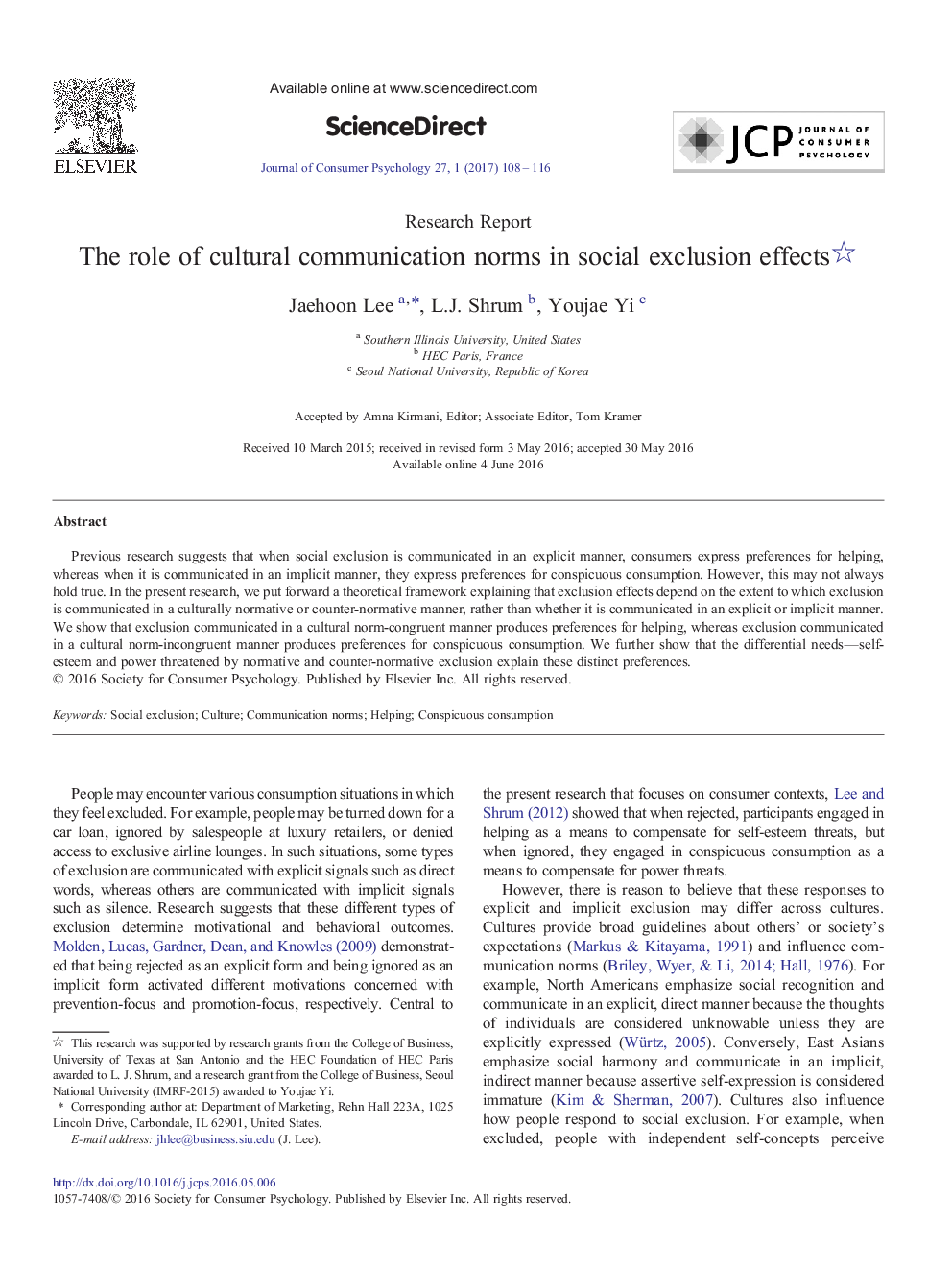| Article ID | Journal | Published Year | Pages | File Type |
|---|---|---|---|---|
| 5034277 | Journal of Consumer Psychology | 2017 | 9 Pages |
Previous research suggests that when social exclusion is communicated in an explicit manner, consumers express preferences for helping, whereas when it is communicated in an implicit manner, they express preferences for conspicuous consumption. However, this may not always hold true. In the present research, we put forward a theoretical framework explaining that exclusion effects depend on the extent to which exclusion is communicated in a culturally normative or counter-normative manner, rather than whether it is communicated in an explicit or implicit manner. We show that exclusion communicated in a cultural norm-congruent manner produces preferences for helping, whereas exclusion communicated in a cultural norm-incongruent manner produces preferences for conspicuous consumption. We further show that the differential needs-self-esteem and power threatened by normative and counter-normative exclusion explain these distinct preferences.
